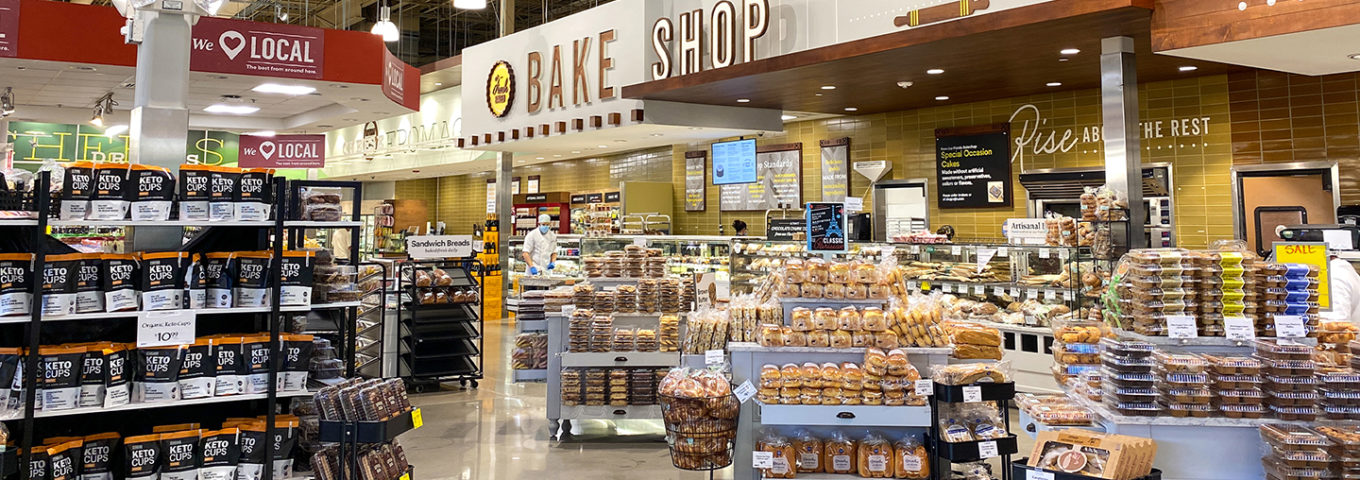Grocery Drainage: The Hidden World Beneath Your Supermarket
by Carvas John, CPD
If you’re like most people, you probably visit a grocery store or supermarket on a regular basis — or, more recently, you may have turned to grocery pickup or delivery as a literal lifeline during the COVID-19 pandemic. But have you ever stopped to consider the often-overlooked, critical infrastructure that keeps a grocery business running?
A great example of this is drains. With footprints of 10,000 square feet to over 100,000 square feet, grocery stores and supermarkets sit atop a vast underground gravity drainage system fed by dozens of drains at a minimum — and often more than a hundred.
Food preparation areas — for prepared foods, appetizers, bakery, meat, deli, seafood, dairy and so forth — produce grease-laden waste from cooking, cleaning equipment after use and washing down floors. Various types of drains, such as floor and trench drains, floor sinks, hub drains and standpipes, collect drainage from food preparation sinks and other equipment and route it through grease interceptors/traps. Small grease traps can be installed locally at the point of the grease-producing sink or equipment; alternatively, the grease waste can be piped to an exterior, underground unit.
The Critical Importance of a Good Drainage System
It is necessary to trap and contain grease waste to prevent it from collecting in drainage pipes and causing blockages. In some instances, grease waste that is not intercepted can migrate from the building through main street sewers to municipal sewage treatment plants and damage the equipment there. This can result in expensive repairs — and fines for the offender into the thousands of dollars a day until the flow of grease waste is stopped.
All sinks and equipment used to store and prepare food — such as compartment sinks, ice machines, food display cases, food storage coolers, proofers, rack ovens, woks, steamers and rotisseries — should be indirectly connected to the drainage system. The same is true for refrigerated food display cases, which account, by far, for most of the drains in a supermarket. These display cases generally appear to be a long, continuous piece of equipment but is actually multiple pieces of equipment connected like a Lego set. Each case has a drain for condensate and wash-down that must be routed to a floor drain.
The Vacuum Drainage Alternative
In lieu of the gravity drainage mentioned above, an alternative method of drainage for food cases, evaporative coils in coolers/freezers and prep rooms is a vacuum drainage system. This type of system consists of a central vacuum unit and a network of overhead piping and risers under continuous vacuum. Condensate from the equipment drains into collection boxes, with risers connected to the overhead piping. Air pressure differential created by condensate draining into these boxes activates the vacuum valve and enables condensate to drain back into the central unit. The unit cycles periodically and dumps its contents into the gravity drainage system through an indirect connection.
Vacuum systems are becoming a popular option because they allow for maximum flexibility and reduced cost during renovation, compared with gravity drainage systems, which require trenching and backfill. Laying out and sizing vacuum systems vary by the system manufacturer.
As businesses adjust to a heightened public focus on health and safety in a pandemic/post-pandemic era, factors such as adequate drainage and proper cleaning protocols in supermarkets have risen to a new level of prominence. Those dozens of drains at your local grocer make a real difference — something to think about the next time you grab a package of deli meat or a container of ice cream!
About the Author
Carvas John, Senior Plumbing and Fire Protection Designer, has led the plumbing team at CoolSys Energy Design for over 25 years. Carvas is an active member of ASPE (American Society of Plumbing Engineers), which he joined after earning his bachelor’s degree in mechanical engineering from the City College of New York. Carvas has created a multitude of complex fire protection designs, including fire pump systems with and without water storage tanks. He has also designed hundreds of full sprinkler systems with hydraulic calculations, including high piled storage. Carvas has worked in plumbing systems that include storm water, siphonic roof drainage, sanitary drainage and vent, domestic hot and cold water, natural and propane gas systems, compressed air, laboratory and medical gas, and vacuum drainage.

